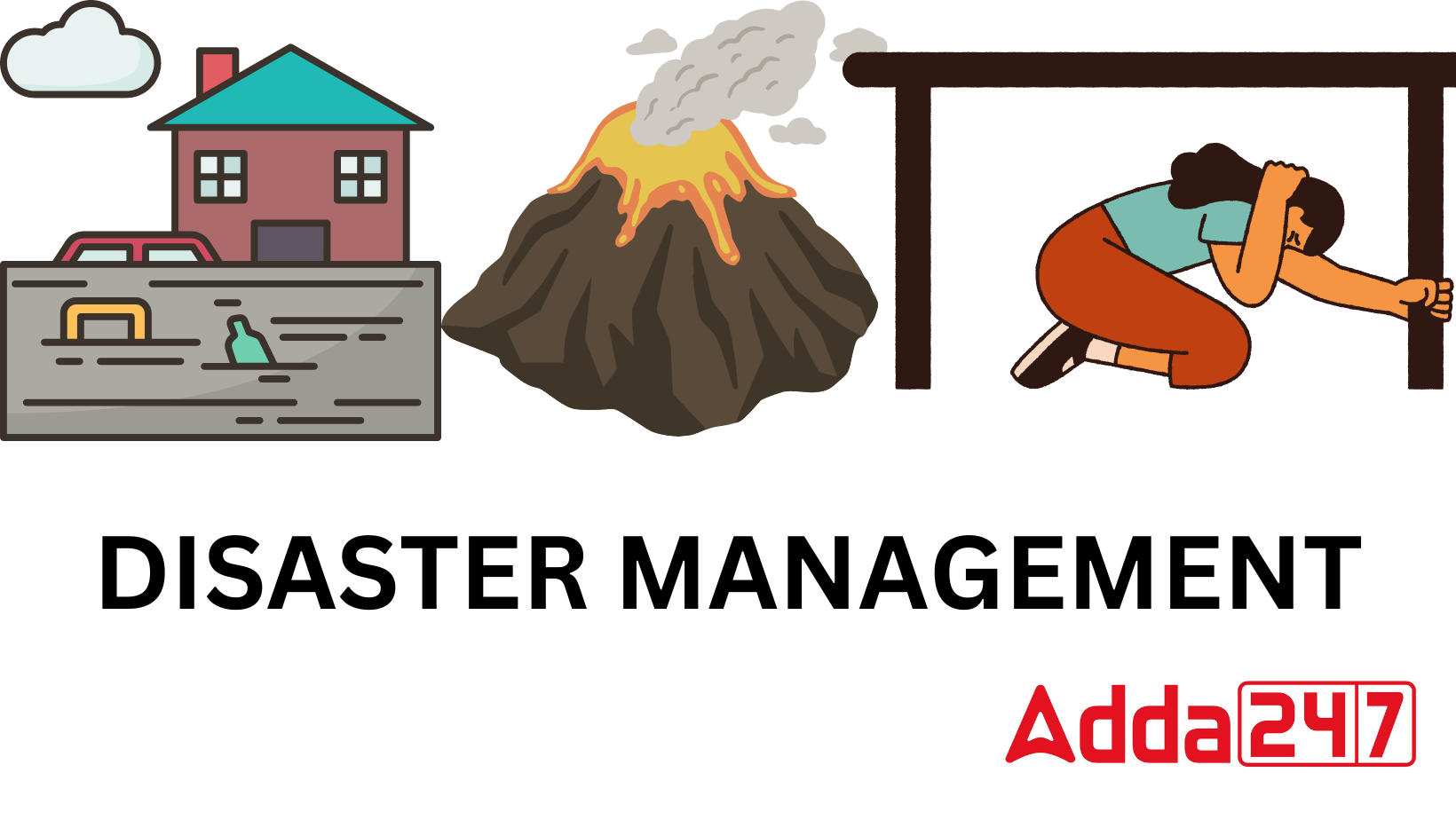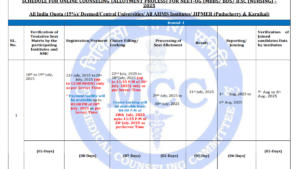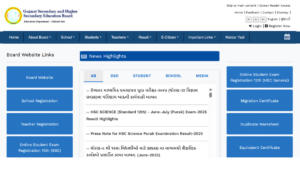Disaster Management Project for Class 9, 10: Disaster management is a systematic strategy for planning for, responding to, and recovering from natural or man-made disasters. It comprises measures to decrease disaster risks, mitigate their effects, and provide adequate response and recovery systems. This study investigates the various stages of disaster management, including preparedness, mitigation, response, and recovery. It emphasises the value of collaboration among government institutions, communities, and non-governmental organisations (NGOs).
Disaster management attempts to safeguard lives, property, and the environment by analysing the impact of catastrophes and adopting effective strategies, as well as creating resilience for future disasters. This article provides you with disaster management projects for class 9 and other school students. It opens with a definition of a disaster and a list of disaster kinds, including earthquakes, tsunamis, cyclones, epidemics, floods, droughts, landslides, and industrial risks, and how a project can be written with data. Check out all of the Disaster Management Project’s working models and real-world implementations below.
Disaster Management Project
Disaster management in India is one of the most crucial points of discussion because of India’s highly diversified Climate. The Indian Subcontinent is frequently evident by natural disasters such as Cyclones, earthquakes, floods, and droughts. Disaster management is the process of planning for and responding to natural disasters. It entails carefully organizing resources to mitigate the damage caused by calamities. It also entails a systematic strategy for handling catastrophe prevention, readiness, response, and recovery duties. In the article,e we will discuss its types, how to prepare Disaster Management Projects for Class 9 and 10 students ,along with new project ideas.
What is Disaster Management?
According to the United Nations, a disaster is a major disruption of a community or society’s ability to function that involves extensive effects on people, property, the economy, or the environment and beyond the capacity of the affected community or society to deal using its own resources.
Disaster management is the process by which we “prepare for, respond to and learn from the effects of big failures”. It is how we cope with the human, material, economic, or environmental impacts of a given disaster. Disasters can have human causes, despite the fact that nature frequently causes them. The International Federation of Red Cross and Red Crescent Societies defines a disaster as a risk that affects individuals who are already weak. Check the disaster management project in detail.
What is Disaster?
A disaster is a sudden, catastrophic event that causes significant disruption, damage, and destruction, affecting the lives, property, and environment of a community or region. Disasters can be natural or man-made, and they often require emergency response and recovery efforts to manage the aftermath and assist affected populations.
Disasters can take many different forms. Disasters, in whatever shape they take, disturb communities and can have major consequences for people, property, businesses, and the environment. They frequently test a community’s ability to cope. Human-caused disasters, such as industrial explosions or structural breakdowns, are the result of human error. Natural catastrophes are caused by physical occurrences such as earthquakes and droughts. Complex disasters might include epidemics or armed conflicts.
Types of Disaster
Types of Disasters are categorised into the following types-
- Floods, hail storms, cloudbursts, cyclones, heat waves, cold waves, droughts, and hurricanes are all examples of water-related disasters.
- Landslides, earthquakes, volcanic eruptions, and tornadoes are examples of geological disasters.
- Man-made disasters include urban and forest fires, oil spills, and the collapse of massive constructions.
- Biological disasters include viral outbreaks, pest invasions, livestock epidemics, and locust plagues.
- Chemical and industrial mishaps, mining shaft fires, and oil spills are examples of industrial disasters.
- Nuclear disasters include nuclear core meltdowns and radiation burn, sickness.
Disaster Management Cycle
Organizations and people use the disaster management cycle, which consists of a sequence of processes, to plan for, contain, and mitigate unforeseen disasters. These could include unforeseen property damage, natural disasters, or other occurrences that put other people’s lives in peril. After the initial crisis has passed, the disaster management cycle assists everyone in minimising the effects of unforeseen events and recovering as much resources as possible. A disaster management cycle aids persons affected by disasters by assisting in their reconstruction, regrouping, and recovery.

Disaster Management Act 2005
The Lok Sabha enacted the Disaster Management Act on November 28, 2005, and the Rajya Sabha did it on December 12, 2005. On January 9, 2006, the Indian President gave his approval. The Act mandates the creation of the National Disaster Management Authority (NDMA), whose chairman shall be the Prime Minister of India. At any given moment, the NDMA can only have nine members total, including the vice-chairperson. The NDMA members are appointed for a five-year term. On 27 September 2005, the NDMA was formally established in accordance with Section 3(1) of the Disaster Management Act after being first established on 30 May 2005 by executive order. The NDMA is in charge of “setting down the rules, plans, and procedures for disaster” as well as making sure that disaster responses are swift and efficient. It is tasked with establishing “guidelines to be followed by the State Authorities in drawing up the national Plans” in accordance with Section 6 of the Act.
The Disaster Management Act of 2005 acknowledges Disaster Management as a crucial process of planning, organizing, coordinating, and implementing measures which are necessary for-
- Prevention of the threat of any disaster
- Reduction of risk of any disaster or its consequences
- Readiness to deal with any disaster
- Promptness in dealing with a disaster
- Assessing the severity of the effects of any disaster
- Rescue and relief
- Rehabilitation and Reconstruction
Project on Disaster Management Objectives
A disaster management project is a strategy created to aid a community or organisation in disaster prevention, response, and recovery. Natural or man-made, disasters can result in a variety of harm, including destruction of physical property, injuries, and fatalities.
A disasters management project’s objective is to lessen the effects of a disaster by:
- Identifying potential risks and hazards
- Creating plans to reduce the risks and hazards
- preparing people for disaster response
- putting in place a structure to manage relief operations
CUET 2024 Samarth 2.0 Arts Complete Batch
Disaster Management Project Types
Here are 4 type kind of topic that you can pick for projects.
- Hazard mitigation projects: These projects are designed to reduce the impact of a disaster by reducing the risk of a hazard occurring or by reducing the damage that a hazard can cause. For example, a hazard mitigation project might involve building a levee to protect a community from flooding or planting trees to help prevent erosion.
- Emergency response plans: These plans outline how a community or organization will respond to a disaster. They typically include information on how to evacuate people, how to provide food and water, and how to provide medical care.
- Recovery plans: These plans outline how a community or organization will recover from a disaster. They typically include information on how to rebuild infrastructure, how to provide financial assistance, and how to help people get back to their normal lives .
- Natural disasters management projects
- Man-made disaster management projects
Natural Disasters Management Projects
The disasters that are caused by nature are termed natural disasters. For example: earthquakes, floods, droughts, etc.
| Earthquake | An earthquake is a rapid, intense shaking of the ground that results from the movement of the earth’s crust and causes significant destruction. It’s possible for a tsunami or volcanic eruption to result from an earthquake. |
| Cyclone | Cyclones are a sort of intense spinning storm that develops over the ocean near the tropics (or, more accurately, tropical cyclones). |
| Flood | Flooding is when there is an unusually deep presence of water on land that interferes with daily activity. River flooding, flash floods, severe rainfall that occurs quickly, or an extraordinary inflow of sea water onto land are all possible causes of flooding (ocean flooding). Storms such as hurricanes (storm surge), high tides (tidal flooding), seismic occurrences (tsunami), or significant landslides can all result in ocean flooding. |
| Volcanic disasters | Volcanic disasters are caused by lava flows, volcanic mudflows, and pyroclastic flows triggered by volcanic activities such as eruptions. It covers extensive areas; volcanic disasters can cause large-scale damage and serious personal injury. Secondary disasters such as debris flows are often triggered by rainfall after a volcanic eruption. |
Manmade Disasters Management Projects
The disasters which are the results of human activities are known as man-made disasters. For examples: road accidents, and terrorist attacks.
| Road accidents | India has a high rate of traffic accidents because to careless driving, inexperienced drivers, and subpar road and vehicle upkeep. India is responsible for 13% of all fatal road accident injuries worldwide, according to Lifeline Foundation, an organisation with a base in Ahmedabad that promotes road safety. |
| Building collapses | Building collapses are frequent in India where construction is often hastily done, with little regard for safety regulations, particularly in the western part of the country. |
| Terrorist attacks | Devastating acts such as the terrorist attacks on the World Trade Centre and the Pentagon have left many concerned about the possibility of future incidents in the United States and their potential impact. Terrorism may involve devastating acts using weapons of mass destruction ranging from chemical agents, biological hazards, a radiological or nuclear device, and other explosives. |
Tips to Prepare a Project on Disaster Management
Here are some tips for developing a disasters management project Class 9.
- The first stage in creating a project on disaster management is identifying the potential risks and hazards that your community or organisation may encounter. You can achieve this by performing a hazard analysis.
- Identify potential hazards and risks, then create plans to reduce them. This is necessary after you have determined what potential risks and hazards exist. This could entail creating evacuation preparations, planting trees, or establishing levees.
- Teach people how to handle emergencies: It’s crucial to teach individuals how to handle emergencies. This can entail instructing individuals in evacuation procedures, first aid techniques, or how to assist the injured.
- Create a system for coordinating relief efforts: It’s critical to have a system in place for coordinating relief efforts in the case of a disaster. This can entail creating a command centre or a communication strategy.
Disaster Management Agencies in India
Some agencies are involved in disaster management that we study below in detail
National Disaster Management Authority (NDMA):- The National Disaster Management Authority, or the NDMA, is an apex body for disaster management, governed by the Prime Minister of India. It is charge of the supervision, direction, and control of the National Disaster Response Force (NDRF).
National Executive Committee (NEC):- The NEC is composed of high-profile ministerial members from the government of India that consist of the Union Home Secretary as Chairperson, and the Secretaries to the Government of India (GoI)like Ministries/Departments of Agriculture, Atomic Energy, Defence, Drinking Water Supply, Environment and Forests, etc. The NEC covers the National Plan for Disaster Management as per the National Policy on Disaster Management.
State Disaster Management Authority (SDMA):- The Chief Minister of the respective state is the head of the SDMA.The State Government has a State Executive Committee (SEC) which assists the State Disaster Management Authority (SDMA) on Disaster Management.
District Disaster Management Authority (DDMA):- The DDMA is headed by the District Collector, Deputy Commissioner or District Magistrate depending on the situation, with the elected representatives of the local authority as the Co-Chairperson. The DDMA ensures that the guidelines framed by the NDMA and the SDMA are followed by all the departments of the State Government at the District level and the local authorities in the District.
Local Authorities:- Local authorities would include Panchayati Raj Institutions (PRI), Municipalities, District and Cantonment 11 Institutional and Legal Arrangements Boards, and Town Planning Authorities which control and manage civic services.
Project Work on Disaster Management Plan
Creating a project on disaster management involves understanding various aspects of preparedness, response, recovery, and mitigation related to natural or man-made disasters. Here’s an outline for your project work on a disaster management plan:1. Introduction
Define Disaster Management.
Importance of disaster preparedness and response.
Overview of the disaster(s) you are focusing on (e.g., earthquake, flood, cyclone, fire, pandemic, etc.).
Types of Disasters
Natural Disasters: Earthquakes, floods, tsunamis, cyclones, hurricanes, droughts, landslides, etc.
Man-Made Disasters: Industrial accidents, chemical spills, nuclear disasters, terrorism, etc.
Phases of Disaster Management
Mitigation: Efforts to reduce the severity or likelihood of a disaster (e.g., building earthquake-resistant structures).
Preparedness: Planning and organizing for potential disasters (e.g., evacuation plans, drills, resource stocking).
Response: Immediate actions taken during or after a disaster (e.g., search and rescue, first aid, food distribution).
Recovery: Long-term efforts to restore normalcy (e.g., rebuilding, psychological counseling, and financial assistance).
Disaster Management Plan
Risk Assessment: Identifying potential risks and the vulnerabilities of the area/community.
Preparedness Plan:
Early Warning Systems: Using technology and communication systems to warn people about impending disasters.
Evacuation Routes and Safe Zones: Identifying safe shelters and routes.
Resource Management: Storing emergency kits, food, water, medicines, and tools.
Training & Drills: Conducting regular disaster preparedness drills in schools, offices, and communities.
Emergency Response:
First responders’ roles: Medical teams, firefighters, police, NGOs, volunteers, etc.
Coordination between local, state, and national disaster management authorities.
Communication plans and protocols.
Recovery Strategies:
Housing and infrastructure rebuilding.
Psychological support for victims.
Restoring livelihoods and ensuring community resilience.
Case Study (Optional)
Analyze a recent disaster (e.g., the 2011 Japan earthquake and tsunami, Hurricane Katrina, COVID-19 pandemic).
Discuss what went well and what could have been improved in disaster management efforts.
Government and International Agencies
Role of national agencies (e.g., NDMA – National Disaster Management Authority in India, FEMA in the USA).
International organizations like the United Nations, Red Cross, and World Health Organization (WHO) in disaster response and recovery.
Technology in Disaster Management
Use of Geographic Information Systems (GIS), drones, satellite imagery, and AI for disaster prediction and damage assessment.
Social media and mobile apps for disseminating information and coordinating response.
Conclusion
Importance of having a robust disaster management plan.
How individuals and communities can contribute to disaster preparedness and mitigation.
Bibliography/References
Include all sources, books, websites, reports, and government documents referred to in the project.









 NEET UG 2025 Counselling Dates OUT! Chec...
NEET UG 2025 Counselling Dates OUT! Chec...
 Dr MGR Medical University Results 2025 R...
Dr MGR Medical University Results 2025 R...
 GSEB HSC Science Supply Result 2025 Down...
GSEB HSC Science Supply Result 2025 Down...

